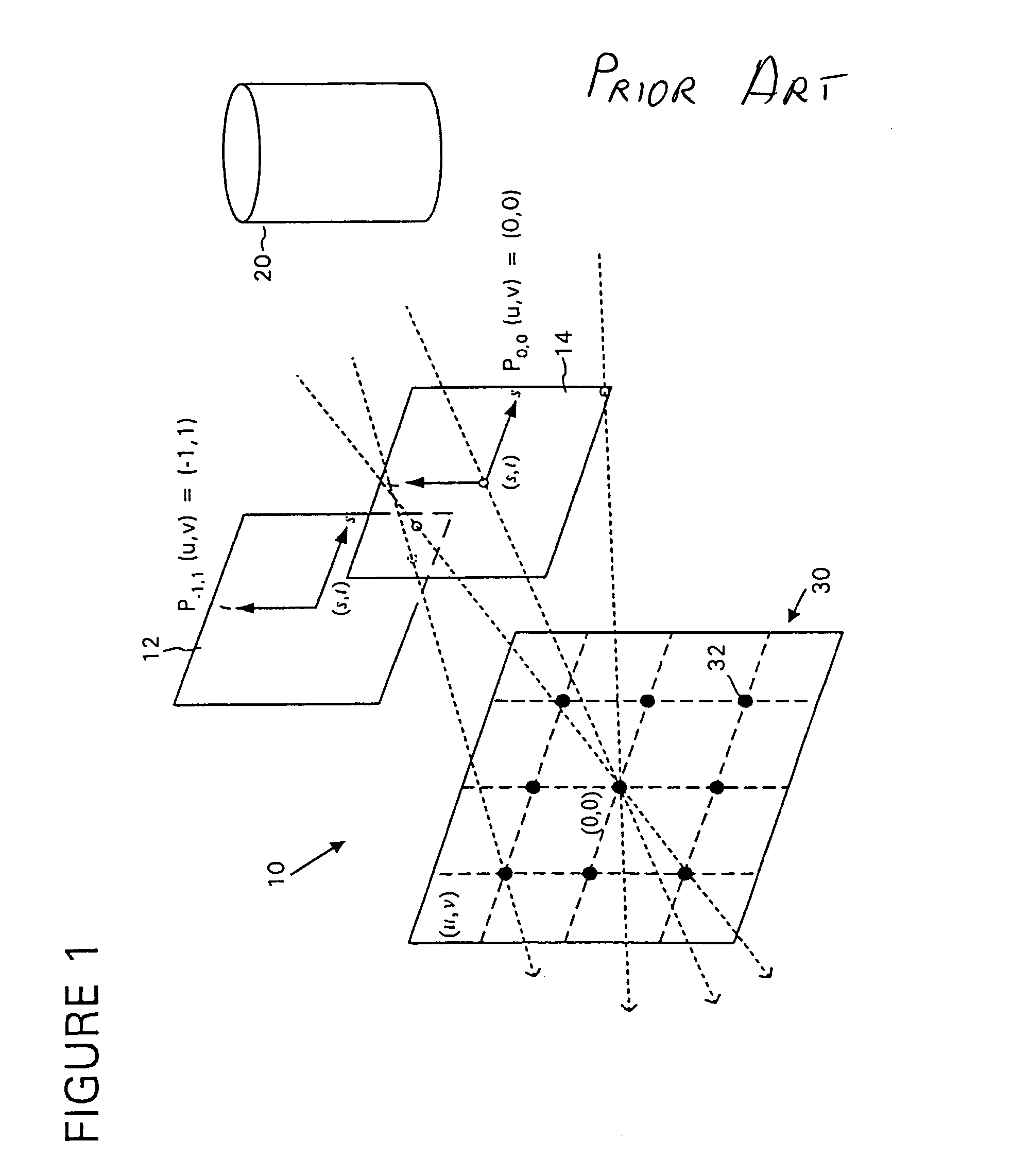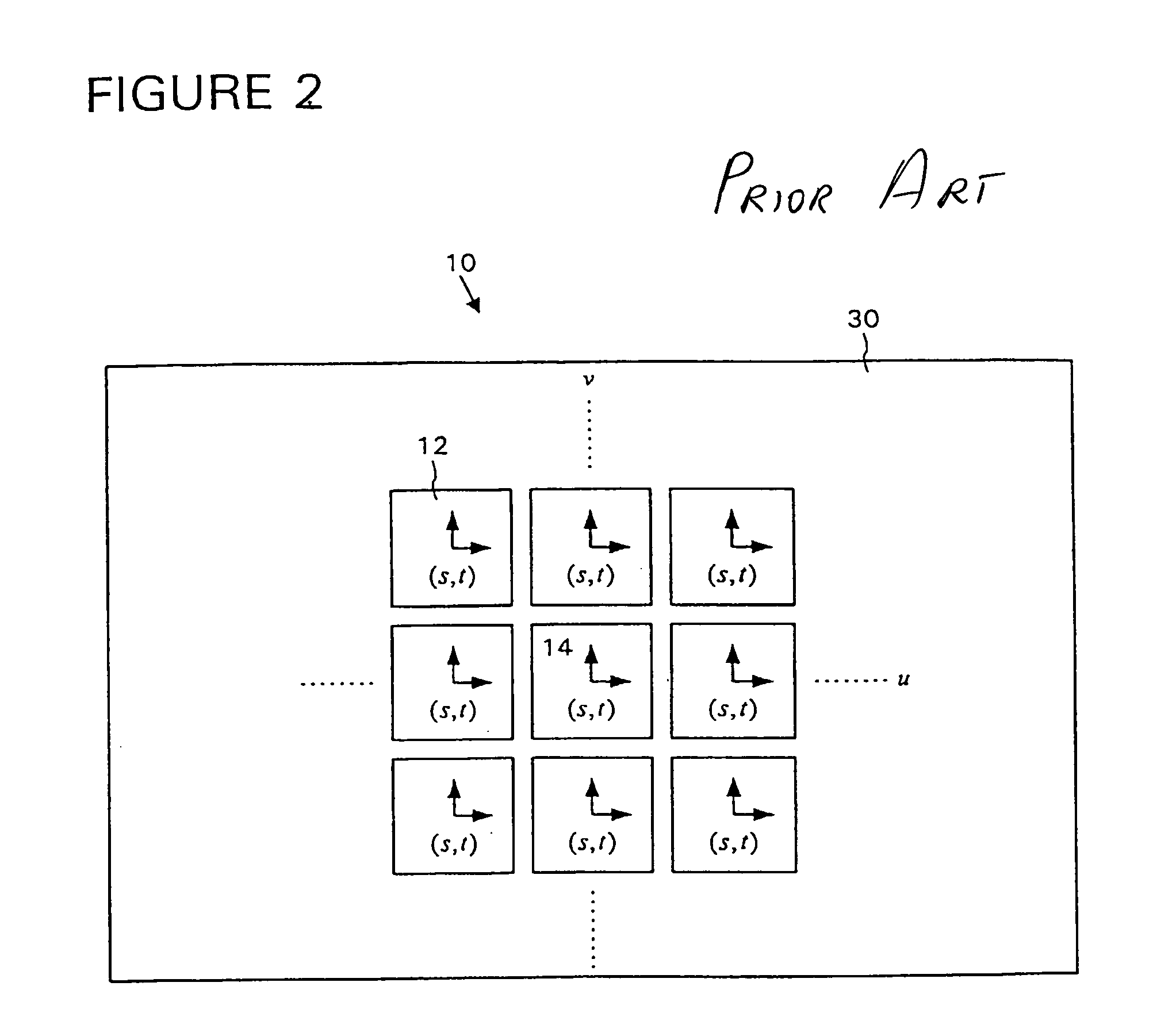Data structure for efficient access to variable-size data objects
a data structure and variable-size technology, applied in image data processing, instruments, image enhancement, etc., can solve the problems of inefficient storage and transmission, difficult storage and transmission of light fields, and relatively complex access to particular vsdos within a series of vsdos, etc., to achieve efficient storage and transmission of digital information, and rapid
- Summary
- Abstract
- Description
- Claims
- Application Information
AI Technical Summary
Benefits of technology
Problems solved by technology
Method used
Image
Examples
Embodiment Construction
[0060]The illustrative embodiment of the present invention is directed to efficient storage and manipulation of variable-size data objects [“VSDOs”] using a data structure with VSDOs. In a recurring example, the VSDOs are for light field information. To provide proper context for the illustrative embodiment, the following description includes details about data, data structures, operations, and other software and hardware components used at various stages of the illustrative embodiment or used in conjunction with the illustrative embodiment.
[0061]The section entitled “Exemplary Computer System” describes a suitable computing environment for the illustrative embodiment.
[0062]The section entitled “Light Fields” describes light fields and operations such as light field rendering for reference and prediction light field images. This section also treats the applicability of the present invention to other types of data.
[0063]The section entitled “Exemplary Data Structures” describes data ...
PUM
 Login to View More
Login to View More Abstract
Description
Claims
Application Information
 Login to View More
Login to View More - R&D
- Intellectual Property
- Life Sciences
- Materials
- Tech Scout
- Unparalleled Data Quality
- Higher Quality Content
- 60% Fewer Hallucinations
Browse by: Latest US Patents, China's latest patents, Technical Efficacy Thesaurus, Application Domain, Technology Topic, Popular Technical Reports.
© 2025 PatSnap. All rights reserved.Legal|Privacy policy|Modern Slavery Act Transparency Statement|Sitemap|About US| Contact US: help@patsnap.com



